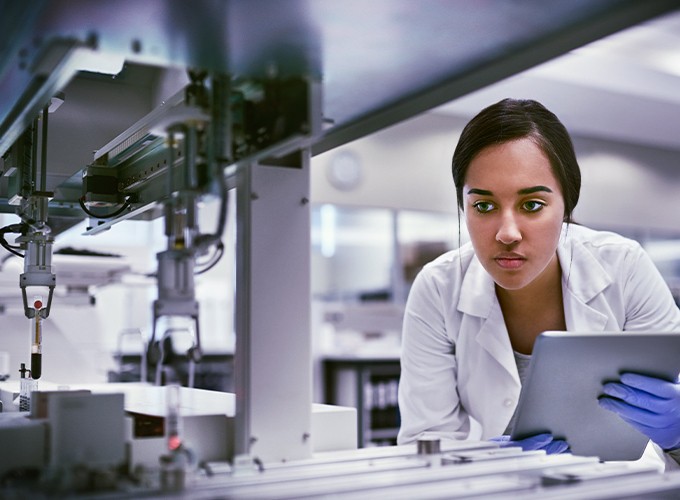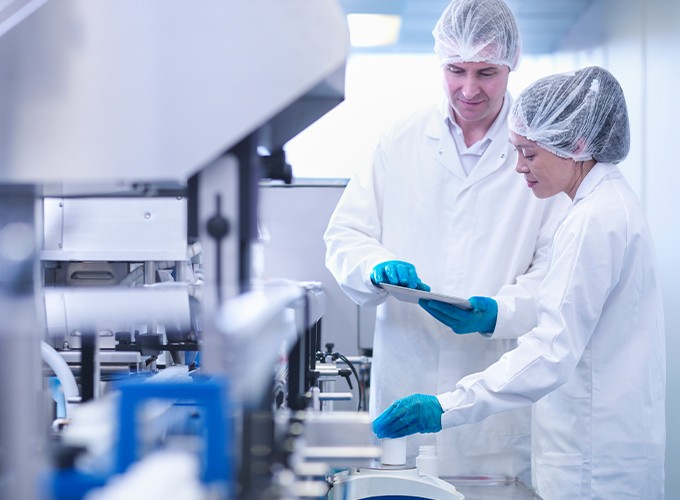Breaking down silos: How pharma is speeding up drug R&D with data
Posted: May 29, 2025
The pharmaceutical industry is one of the fastest-growing sectors in the global economy, generating over $1.2 trillion in sales in 2020. Since 2017, it has grown at an average annual rate of 5.8%.[1] The industry always strives to bring new and better medicines to the market quickly. Yet according to the National Library of Medicine, 90% of clinical drug development efforts fail.[2] Developing a new drug usually takes 13-15 years, with an average cost of $2.5 billion—an enormous investment of time and resources.[3] Fortunately, developments in technology are taking some of the trial and error out of the process.
From AI models that accelerate molecular screening to process simulations that reduce costly lab testing, digital tools are beginning to reshape how pharmaceutical companies conduct drug R&D. But none of these innovations can succeed without one foundational element: access to contextualized, reliable data.
Companies closing the innovation gap with a strong data foundation

Pharmaceutical companies produce a tremendous amount of data. From the molecular makeup of drug candidates to lab equipment and processes to clinical trial data, the amount and complexity of data is staggering. Operational, clinical, and equipment data often live in disconnected systems, creating silos that inhibit real-time insights and make it harder to scale innovation.
Companies like Parexel, Sanofi, and Biogen are breaking down these silos to transform key stages of drug development—from clinical trial monitoring to predictive maintenance and real-time product testing—ultimately accelerating the delivery of life-saving treatments.
Parexel: Improving clinical trials with wearables
To reduce clinical trial dropout rates and speed up time to market, Parexel developed the Patient Sensor Platform, which uses wearable sensors and AVEVA™ PI System™ to remotely collect vital patient data such as blood pressure, glucose levels, and respiratory rates.
In clinical trials—often the longest and most critical phase of drug development—patient participation and adherence are essential. But with data traditionally collected on site, companies risk delays from missed appointments and participant attrition. Since drug patents last 20 years, and it can take a decade or more to reach approval, maximizing every step of the process is crucial.
Sanofi: Improving equipment performance with contextualized data
To catch equipment issues early and prevent unexpected failures, Sanofi built a contextualized data infrastructure with AVEVA PI System data and Quartic.ai’s anomaly-detection models.
This system allows the pharmaceutical company to detect equipment problems sooner, optimize maintenance workflows, and boost equipment reliability. Sanofi also introduced physical sensors—such as vibration and ultrasonic monitors—to enhance existing process data. With all this information, Sanofi can develop predictive models to gain understanding of equipment risk, allowing it to more precisely pinpoint when to perform maintenance.
Biogen: Using operational data to reduce product testing time
To scale production of its Alzheimer’s drug, Aducanumab, Biogen embedded product consistency testing directly into the manufacturing process using predictive models—dramatically reducing quality control time.
With the goal of treating one million more patients, the company had to manufacture more of the drug and make it more affordable. Biogen used real-time operations data from AVEVA PI System to build predictive models that assess product consistency on the plant floor—no longer as a final, isolated step.

The continuous in-line product testing significantly reduced the time and cost of quality control. As Tim Alosi, Head of Biogen’s Global Data Analytics Team, put it: “It’s the time-series data coupled with the manufacturing context that enables these different applications.”
Benefits of a solid data foundation in drug development
While each company’s approach differs, their success rests on the same foundation: unified, contextualized data. With a solid data foundation, companies can accelerate drug development and ensure quality at scale through:
- Cloud-based data architecture: Aggregating and contextualizing data from numerous systems, equipment, and processes, and making it securely accessible through user-friendly interfaces.
- Process optimization: Using simulation and analytics to improve manufacturing efficiency and product quality.
- Predictive maintenance: Monitoring equipment health to streamline maintenance and prevent unplanned downtime.
- Supply chain management: Enhancing inventory control and distribution logistics.
- Compliance reporting: Ensuring accurate documentation and consistent adherence to regulations.
Moonshots: AI and the future of drug R&D
New approaches to drug discovery now use generative AI and deep learning to explore massive chemical databases, streamline testing, and even support patient care. A recent report from McKinsey discusses “moonshot” use cases that many pharmaceutical companies are exploring, harnessing gen AI to take big innovative leaps. They estimate an additional $390 billion to $550 billion of value from these use cases in the near future.[4]
Genentech, part of the Roche group, is using advanced AI-driven process simulation in the drug discovery phase using an iterative model, what they call “lab in a loop.” Researchers use data from experiments in the lab and clinic to create AI models that make predictions about the design and interactions of molecules. They then test the predictions that come from these models and feed the resulting data back into the models. This process has led to faster innovation and development of treatments like personalized cancer vaccines.
Sanofi is beginning to use digital twins of patients to test new drug candidates before moving them to the next stages of development. By shifting from the current trial-and-error approach to a virtual patient computer platform, Sanofi hopes to dramatically lower the industry’s 90% new drug failure rate.
While these technological developments hold a lot of potential for the future of drug discovery and development, insights and innovation are only as good as the information they’re based on.
Conclusion:
A strong data foundation helps organizations build a true digital culture, allowing people across the organization to access reliable, contextualized information about equipment, processes, and products.
While new advancements in AI have tremendous potential to transform the pharmaceutical industry, it is important for organizations to consider how a strong foundation and incremental change can allow them to grow at a sustainable pace. Predictive maintenance, process simulation, and automation aren’t just incremental improvements—they’re the groundwork for innovation at scale.
[1] Hole, Glenn, Anastasia S. Hole, and Ian McFalone-Shaw. National Library of Medicine. (October 6, 2021). Digitalization in pharmaceutical industry: What to focus on under the digital implementation process? https://pmc.ncbi.nlm.nih.gov/articles/PMC8528719/#bb0615
[2] National Library of Medicine. (July 12, 2022). Why 90% of clinical drug development fails and how to improve it? Retrieved from https://pubmed.ncbi.nlm.nih.gov/35865092/.
[3] Alucozi, Milad, Will Fondrie, and Megan Sperry. Wyss Institute. (January 9, 2025). From Data to Drugs: The Role of Artificial Intelligence in Drug Discovery. Retrieved from https://wyss.harvard.edu/news/from-data-to-drugs-the-role-of-artificial-intelligence-in-drug-discovery/#:~:text=AI%20and%20machine%20learning%20are,accurate%2C%20efficient%2C%20and%20humane.
[4] Lorbeer, Chantal and Obi Ezekoye. McKinsey & Company. (December 18, 2024). The state of the chemicals industry: Time for bold action and innovation. Retrieved from https://www.mckinsey.com/industries/chemicals/our-insights/the-state-of-the-chemicals-industry-time-for-bold-action-and-innovation.
Related blog posts
Stay in the know: Keep up to date on the latest happenings around the industry.